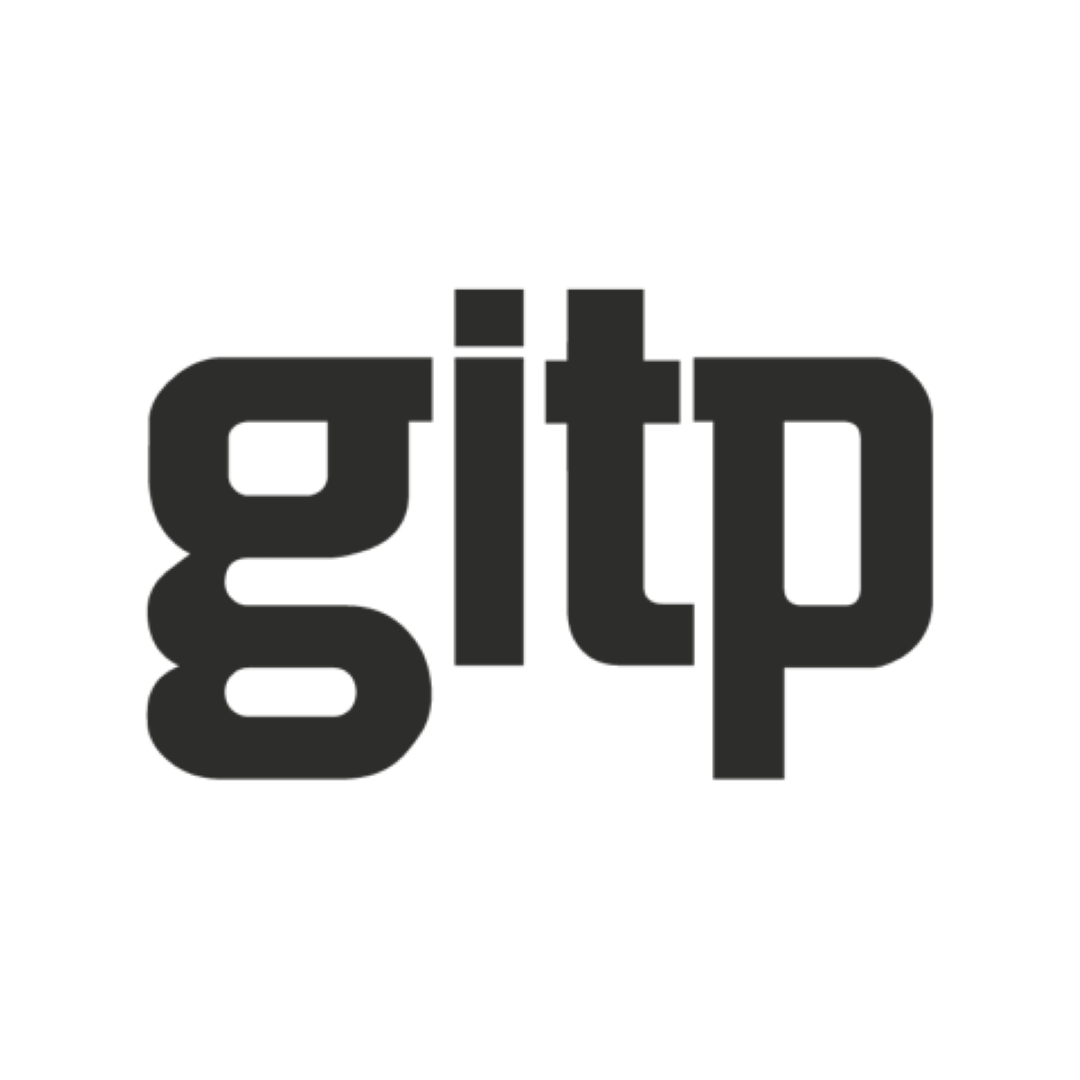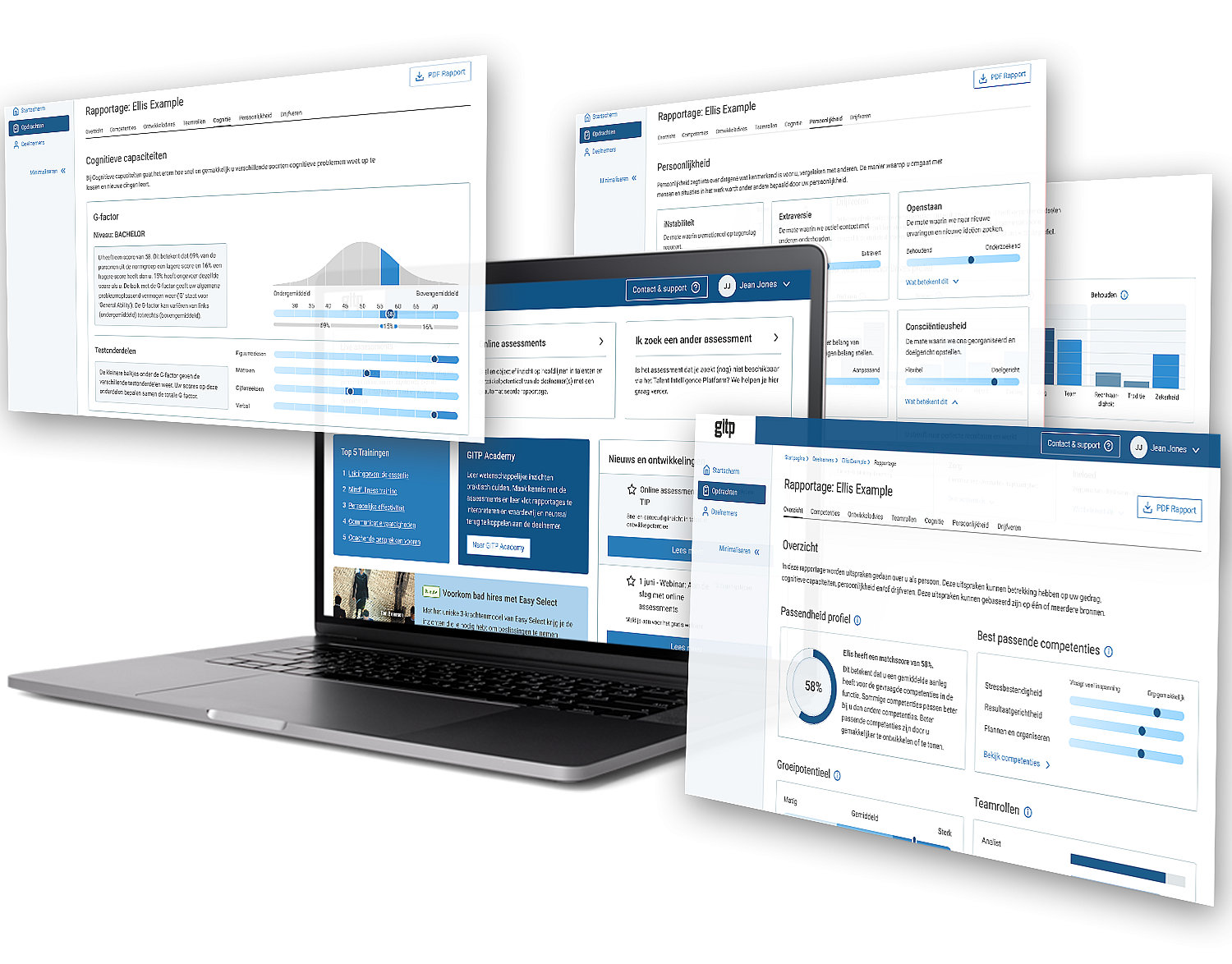
Competencies
Below you will find a selection of the competencies from the GITP competency model. Want to know more? Get informed.

TALENT CENTRAL THROUGH CLEAR LANGUAGE
What talents do you need to achieve your organizational goals? And how are these talents reflected in the job profiles? Competence management ensures an effective translation of strategic objectives into solid competence profiles for functions and roles within the organization. Success comes from the optimal use of talent.
Management and Leadership
The Management/Leadership competency area comprises the competencies related to behavior focused on directing, motivating and developing human resources at the level of both content and process.
Leadership
Directing and guiding employees in the performance of their jobs; employing management styles and methods which are tailored to the employee/team and situation in question.
Group leadership
Directing and guiding a group of employees in the performance of their tasks; establishing and maintaining the team spirit and joint activities needed to achieve a set goal.
Coaching
Directing and guiding an employee in the performance of his/her job; adapting coaching style to employee and situation so that the employee can develop optimally.
Delegation
Assigning one's own responsibilities and authority to the appropriate employees in an unambiguous manner; making effective use of employees' time and skills.
Planning and organizing
Determining goals and priorities effectively and stipulating the time, activities and resources required to achieve the set goals.
Management control
Establishing and monitoring procedures to control and regulate employee tasks and activities as well as one's own tasks and responsibilities.
Enterprise
The Enterprise competency area comprises the competencies related to behavior focused on detecting and utilizing market opportunities, anticipating and dealing with customer issues and achieving customer satisfaction and business advantage.
Leadership
Directing and guiding employees in the performance of their jobs; employing management styles and methods which are tailored to the employee/team and situation in question.
Group leadership
Directing and guiding a group of employees in the performance of their tasks; establishing and maintaining the team spirit and joint activities needed to achieve a set goal.
Entrepreneurship
Recognizing market opportunities for both current and new products/services and considering them in a businesslike manner; taking risks to achieve a business advantage.
Market orientation
Demonstrating that one is well informed about market and technological developments.
Customer orientation
Investigating customer wishes and needs and acting accordingly; anticipating customer needs; giving high priority to service and customer satisfaction.
Networking
Constructing relationships and networks which are useful in achieving objectives; making effective use of informal networks to get things done.
Analysis and Decision-making
The Analysis/Decision-making competency area comprises the competencies related to behavior concerned with collecting, analyzing and weighing data, placing data in a broader perspective, adopting standpoints and making well-considered decisions.
Problem analysis
Identifying problems; recognizing significant information; making connections between data; tracing possible causes of problems; investigating relevant data.
Judgment
Drawing correct and realistic conclusions based on the information available.
Decisiveness
Active decision-making; committing oneself by expressing opinions, taking action.
Vision
Standing back from day-to-day activities; concentrating on major issues and long-term policy.
Organizational sensitivity
Recognizing the effects and results of one's own decisions or activities on other parts of the organization; recognizing the interests of other parts of one's organization.
Extra-organizational awareness
Demonstrating awareness of social, political and economic developments and using this knowledge effectively for one's own job or organization.
Learning ability
Absorbing new information and ideas and applying them effectively.
Creativity
Coming up with original solutions for job-related problems; devising new working methods to replace current methods.
Self-organization
Organizing one's own work effectively by formulating objectives and planning activities; focusing available time and energy on major issues and critical problems.
Communication
The Communication competency area comprises the competencies related to behavior focused on mutual interaction and communication, personal demeanor and social skills.
Oral communication
Conveying ideas and opinions clearly to others, making use of unambiguous language, gestures and non-verbal communication; adapting language and terminology appropriately.
Oral presentation
Presenting ideas and facts clearly, making use of appropriate aids; tailoring presentation to needs of audience.
Written communication
Expressing ideas and opinions clearly in properly structured, well-organized and grammatically correct reports or documents utilizing language and terminology appropriate to the reader.
Listening
Attentive listening, as demonstrated by the capacity to pick up significant information from verbal communications; continuing to ask questions; investigating reactions.
Sensitivity
Showing oneself to be aware of other people and the environment and of one's own influence on both. Behavior reflecting recognition of the feelings of others.
Persuasiveness
Attempting to persuade others to adopt a certain standpoint and trying to come to agreement by making use of appropriate arguments and methods.
Negotiating
Communicating one's own standpoints and arguments effectively and pointing out common goals in a manner leading to agreement and acceptance by all parties.
Impact
Making and maintaining a favorable first impression on others; inspiring confidence in others.
Teamwork
Contributing actively to a joint result or solution to a problem, even when such teamwork concerns a matter which is not of immediate personal interest.
Sociability
Mingling effortlessly with other people; at ease when approaching others or on social occasions.
Personal behavior
The Personal behavior competency area comprises the competencies related to behavior which is determined to a great extent by people’s personal, individual natures.
Adaptability
Maintaining effectiveness by adapting to changing circumstances, tasks, responsibilities and people.
Stress tolerance
Continuing to perform effectively when facing time pressure, adversity, disappointment and opposition.
Independence
Acting on the basis of one's own convictions rather than trying to please others; going one's own way.
Tenacity
Staying with a plan of action or point of view until the desired goal has been attained or is no longer reasonably attainable.
Behavioral flexibility
Modifying one's behavior to reach a set goal when problems or opportunities arise.
Motivation
The Motivation competency area comprises the competencies related to behavior which is determined to a great extent by the personal attitude and motivation of individuals.
Initiative
Recognizing opportunities and acting on them; self-starting rather than waiting passively to see what happens.
Work standards
Setting high standards regarding one's own work and acting accordingly; showing dissatisfaction with merely average performance.
Ambition
Displaying behavior focused on reaching a higher position or assuming more responsibilities.
Self-development
Possessing insight into one's own strengths and weaknesses; on this basis, initiating activities to increase/enhance one's knowledge, skills and competencies in order to perform more effectively.
Integrity
Upholding generally accepted social and ethical standards in job-related activities.
Discipline
Complying with organizational policy and/or procedures; seeking confirmation from the proper authorities in case of ambiguous or changing circumstances.
Organizational loyalty
Bringing one's own behavior into line with the culture, requirements, priorities and goals of the organization.
Results orientation
Actively focused on achieving results and objectives; ready to take action in case of disappointing results.
Quality orientation
Setting high standards regarding the quality of products and services and acting accordingly.
Personal Effectiveness
The competency area Personal Effectiveness covers skills concerned with behavior that reinforces a person's decisiveness and effectiveness.
Boldness
Taking certain risks in order to gain expected long-term benefits.
Closing contracts
Working systematically to successfully close contracts in commercially promising situations. Keeping focused on getting commitment to binding agreements.
Organizing ability
Identifying and recruiting people and other resources in order to carry out a plan; allocating them in such a way that the intended results are achieved.
Communicating vision
Communicating the direction in which the organization is developing in an appealing way and creating support for strategic objectives.
Reliability
Keeping to arrangements and promises, and accepting their consequences. If things don't work out, taking responsibility for the consequences and, wherever possible, avoiding a negative impact on others.
Attention to detail
Paying attention to detail; being able to focus on and deal with detailed information in a sustained way.
Energy
Being able to be extremely active for long periods when necessary. Working hard; having stamina.
Conceptual thinking
Providing wider or deeper understanding of situations or problems by applying another frame of reference or by connecting them with other information.
Intercultural orientation
Recognizing the habits and cultural background of people and organizations around the world. Showing respect and managing social and interpersonal situations effectively.
Self-control
Being able to adequately control one's emotions and react effectively to those of others, even in emotionally taxing situations. Avoiding undesirable commitments and escalations.
Ask one of our consultants. We're here to help! Call 088 448 70 00 or schedule a consultation.



